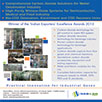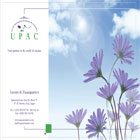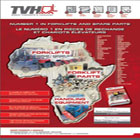

M a r k e t N e w s
Transformation of Existing Energy Infrastructure in Sub-Saharan Africa Could Bring Electricity to 15.4 Million People
Posted on : Wednesday, 21st September 2016
The research findings are derived from a method that identifies existing energy infrastructure. This shows that partial investment has already been provided, and managers as well as technicians continue to operate and maintain the infrastructure. The study authors built a custom-made multi-layer spatial analysis and used satellite night images to spot rural mini-grids.
The study provided a map of three infrastructure categories: coal power plants that can burn biomass (bagasse, a residue of sugarcane) either with coal or separately; rural mini-grids that can combine solar PV systems; and non-powered dams that can be transformed into hydroelectric power facilities.
Nearly half of the electricity supply in the island nation is provided by sugar refineries, including almost half of the energy derived from bagasse used during the harvest season. The remaining energy is derived from coal used during the off-season.
Originally, the non-powered dams were built to carry out one or more non-energy requirements, such as flood control or irrigation. A part of these dams that meet specific conditions can be an attractive option as they can be easily modified to generate electricity.
Researchers analyzed hundreds of non-powered dams in Africa and found 52 dams with the potential to produce >1 MW and 39 dams with a mini-hydro potential to generate <1 MW.
When combined with solar PV systems, existing rural mini-grids can result in half of the energy cost of new investments in PV systems and this could be due to the reduced battery costs that would usually make up 40% of the total cost of the system and the existing supply lines.
While the projected number of the beneficiaries of the upgradation of existing infrastructures in sub-Saharan Africa is only 2 to 3% of the population without electricity access, this method discovers projects that can provide real momentum to increase investments in renewable energy for private sectors.
The JRC has been actively participating in research to help reduce energy scarcity in sub-Saharan Africa. The Renewable Energy Mapping and Monitoring in Europe and Africa (REMEA) project has mapped the potential of renewable energy in Africa and highlighted different low-cost options.
In addition, the African Renewable Energy Technology Platform (AFRETEP) created a large network of African research institutions handling renewable energy to engage the African academia and policy-making institutions. Besides detecting, examining and monitoring the spatial supply of the African potential, other current activities of JRC include supporting the plans of the Commission’s Directorate-General for International Cooperation and Development in Africa.
Source : www.azocleantech.com





























































